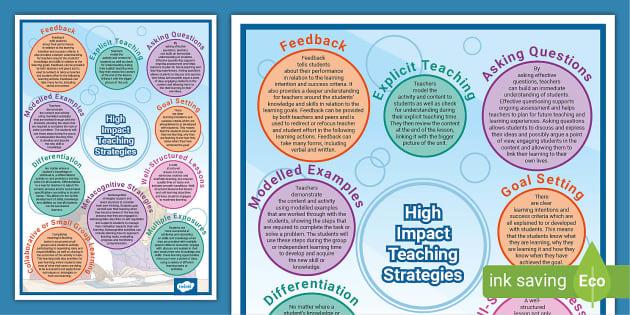How to Train Educators for Effective Inclusive Teaching Practices: Essential Strategies and Tips
As educational environments evolve, the need for inclusive teaching practices has never been more pressing. Schools and institutions must ensure every learner—irrespective of background, ability, or learning style—can thrive. At the heart of this movement are educators equipped with the skills, empathy, and strategies needed to foster truly inclusive classrooms. But how can administrators,trainers,and leaders effectively train educators for inclusive teaching? In this complete guide,we’ll explore actionable strategies,key benefits,practical tips,and real-world insights to empower your staff for transformative teaching.
Why Inclusive Teaching Matters: The Foundation of Modern Education
Inclusive teaching creates environments where all students feel valued, supported, and capable of success. by addressing a range of learning styles, cultural backgrounds, and abilities, you foster a more just and effective learning experience. Preparing educators with the knowledge and tools for effective inclusive teaching practices results in:
- Improved student engagement and academic achievement
- Higher sense of belonging and social cohesion in the classroom
- Reduced disciplinary issues and greater emotional well-being
- Compliance with legal and ethical standards in education
Essential Strategies to Train Educators for Inclusive Teaching
1. Provide Comprehensive Professional Growth Opportunities
Ongoing professional development is crucial for equipping teachers with up-to-date inclusive teaching strategies. Effective programs should encompass:
- Workshops and Seminars: Regular sessions led by inclusion experts focusing on universal design for learning (UDL), differentiated instruction, and cultural competency.
- Online Courses and Certifications: Flexible, self-paced modules allow teachers to dive deep into specific areas of inclusion, such as supporting neurodiverse students or trauma-informed teaching.
- Interactive Simulations: Hands-on opportunities for educators to practice inclusive teaching scenarios and receive constructive feedback.
2. Cultivate an Inclusive Mindset
Training must go beyond methods and curricula—it should shape beliefs and attitudes. To support an inclusive classroom culture:
- Foster open discussions around bias, privilege, and cultural awareness
- Encourage teachers to self-reflect on their own teaching practices and assumptions
- Promote empathy and encourage teachers to see situations from a variety of student perspectives
3. Leverage Evidence-based Instructional Strategies
Integrating research-backed teaching strategies into training ensures methods are effective and measurable. Key approaches include:
- Differentiated instruction: Tailor lessons to meet diverse learning needs and preferences
- Collaborative Learning: Design group activities that encourage peer support and cross-cultural interaction
- Multi-modal Materials: Utilize visual, auditory, kinesthetic, and digital resources to reach all learners
- Adaptive Technology: Train teachers on assistive tools, apps, and platforms supporting students with special needs
4. Build Support Networks and Coaching Systems
Effective inclusion flourishes when teachers feel supported. consider these strategies:
- Peer Mentoring: Pair novice teachers with experienced staff skilled in inclusive practices
- Co-teaching Models: Foster partnerships between general and special education teachers for shared expertise
- Professional Learning Communities (PLCs): Create ongoing forums for teachers to share successes, challenges, and resources
5. Incorporate Real-World Case studies and Scenarios
Real-life examples make training relevant and relatable. Share case studies illustrating successful inclusive teaching adaptations:
- Student profiles demonstrating the impact of tailored instructional strategies
- School-wide transformations after implementing systematic inclusion policies
- First-hand testimonials from educators about overcoming challenges and celebrating successes
Practical Tips for Implementing Inclusive Teaching Practices
- Start Small and Scale: Encourage educators to adopt one new inclusive strategy at a time and build confidence through incremental change.
- Regular Reflection: Provide structured opportunities for teachers to assess their progress and adjust their approaches.
- Solicit Student Feedback: Involve students in reflecting on what inclusivity feels and looks like in the classroom.
- Celebrate Diversity: Incorporate diverse perspectives—and invite guest speakers or community partners—to model inclusive thinking.
- Utilize Data: Track outcomes related to student engagement, achievement, and participation to inform ongoing improvements.
Benefits of Investing in Teacher Training for Inclusive Education
The advantages of a well-trained, inclusive teaching workforce ripple throughout the educational ecosystem:
- Increased Student Success: students of all backgrounds achieve more when their needs are recognized and addressed.
- More Positive School Culture: Schools become safer, happier places where everyone’s contributions are valued.
- Preparedness for Future Challenges: Inclusive teaching prepares learners for a diverse and dynamic world.
- Stronger Community Engagement: families and local partners are more likely to support inclusive institutions.
First-Hand Experience: Stories from the Classroom
“After implementing differentiated instruction, I noticed even my most reserved students beginning to participate. The training helped me recognize subtle barriers in my teaching, and now my classroom feels truly inclusive for the first time.”
– Sarah K., 5th Grade Teacher
“The professional learning community (PLC) gave me the ongoing support I needed.Inclusive teaching isn’t just about tools—it’s about attitude. With encouragement and shared resources, I’ve transformed both my teaching and my outlook.”
– Carlos M., High School Math Teacher
Inclusive teaching Case Study: Transforming a School’s Culture
At Green Valley Elementary, a commitment to inclusive teaching practices began with intensive staff training and clear leadership. Teachers participated in year-long professional development, learning to identify individual student strengths and challenges. As a result, disciplinary referrals dropped by 38%, and standardized test scores improved across all demographic groups. Perhaps most importantly, student surveys showed a 95% increase in feelings of belonging and safety at school.
Conclusion: Empowering Educators for Inclusive Success
Building a culture of inclusivity starts with well-trained, passionate teachers. By investing in high-quality training, fostering supportive networks, providing practical resources, and celebrating ongoing growth, schools can implement effective inclusive teaching practices that benefit every learner. Start today by evaluating your current training initiatives, engaging your teaching team, and taking meaningful steps toward transformative inclusion.
Ready to take the next step? Explore our additional resources, sign up for our teacher training newsletter, or share your own stories of inclusive classroom success below!

